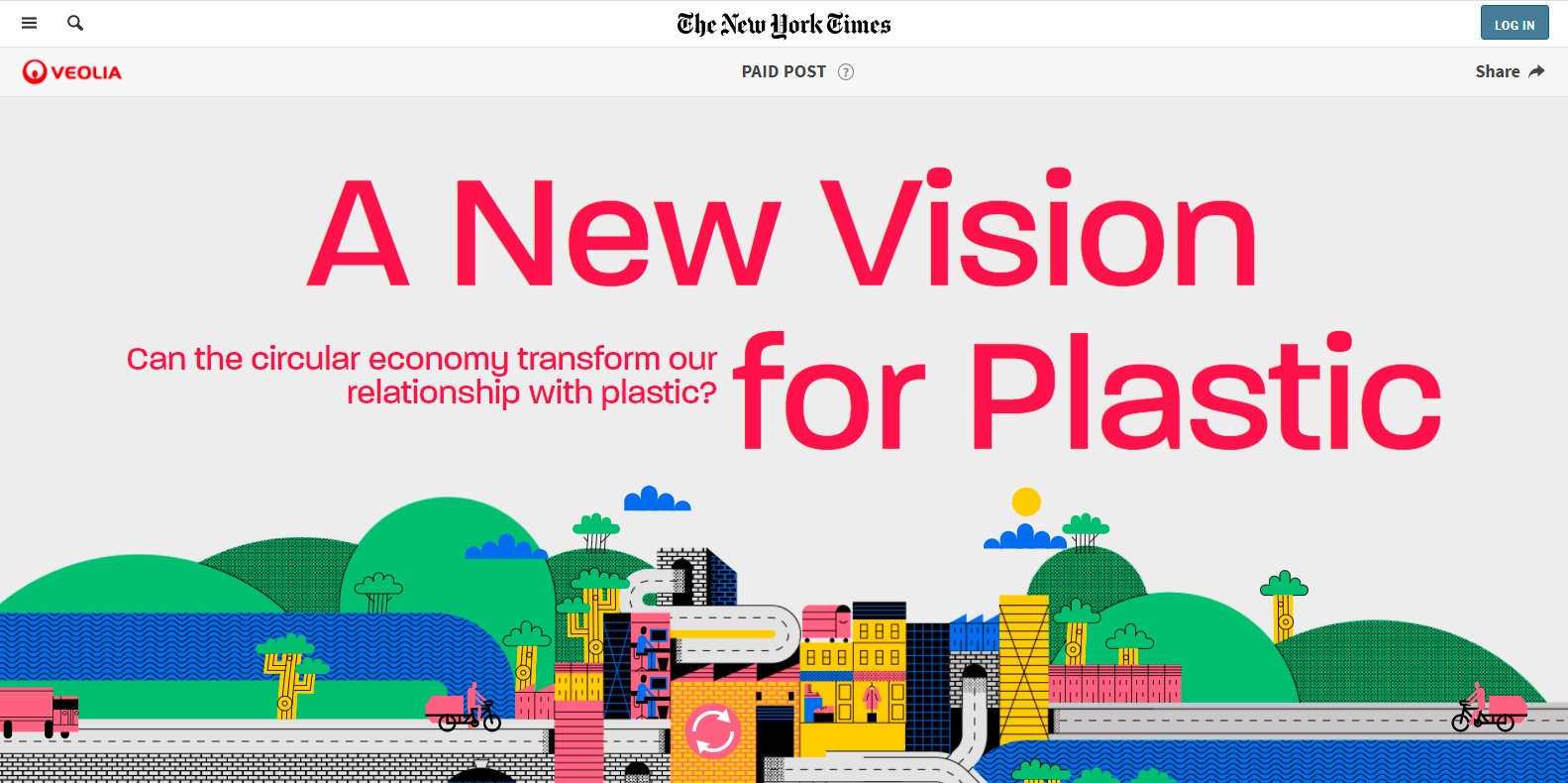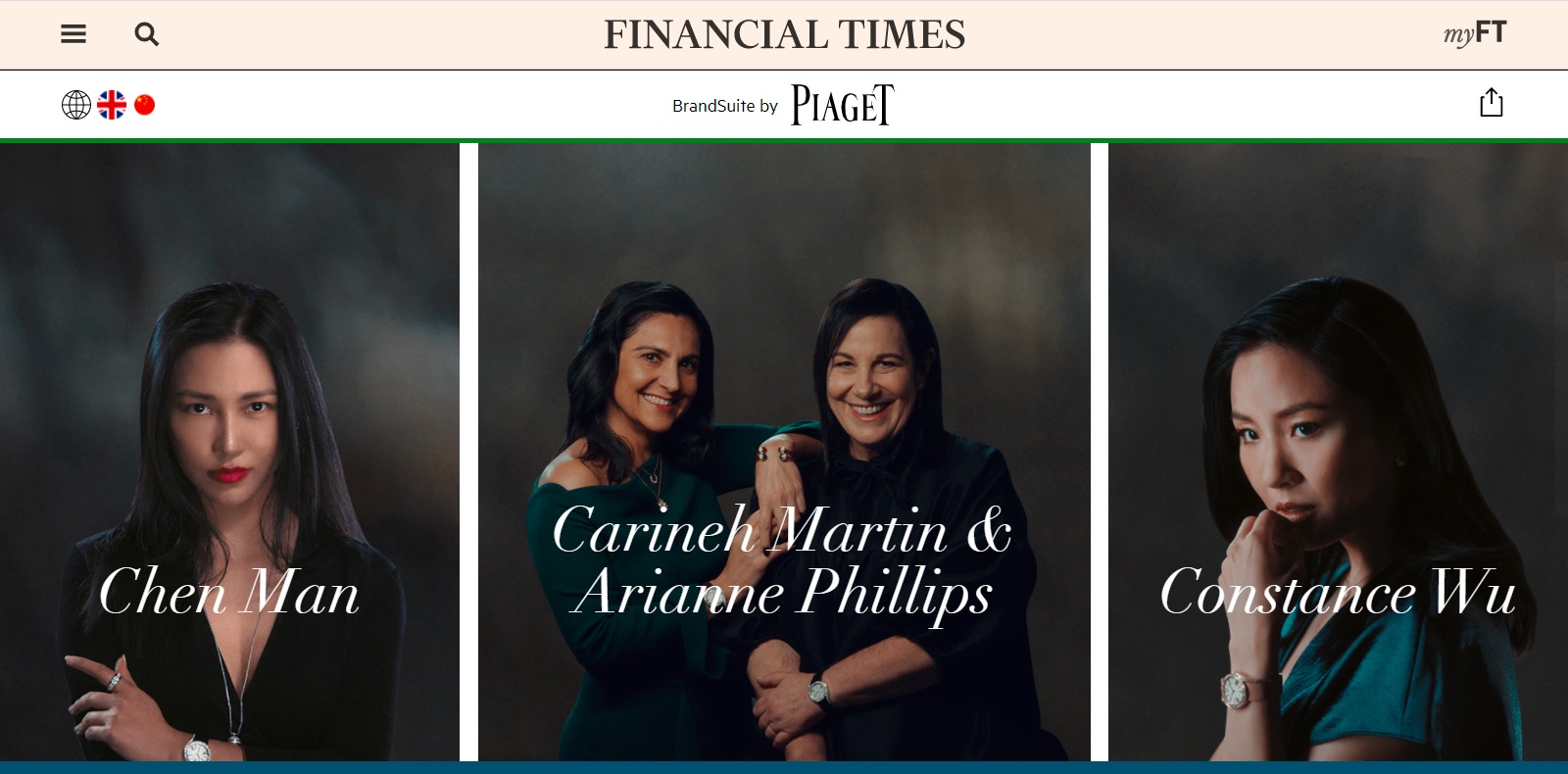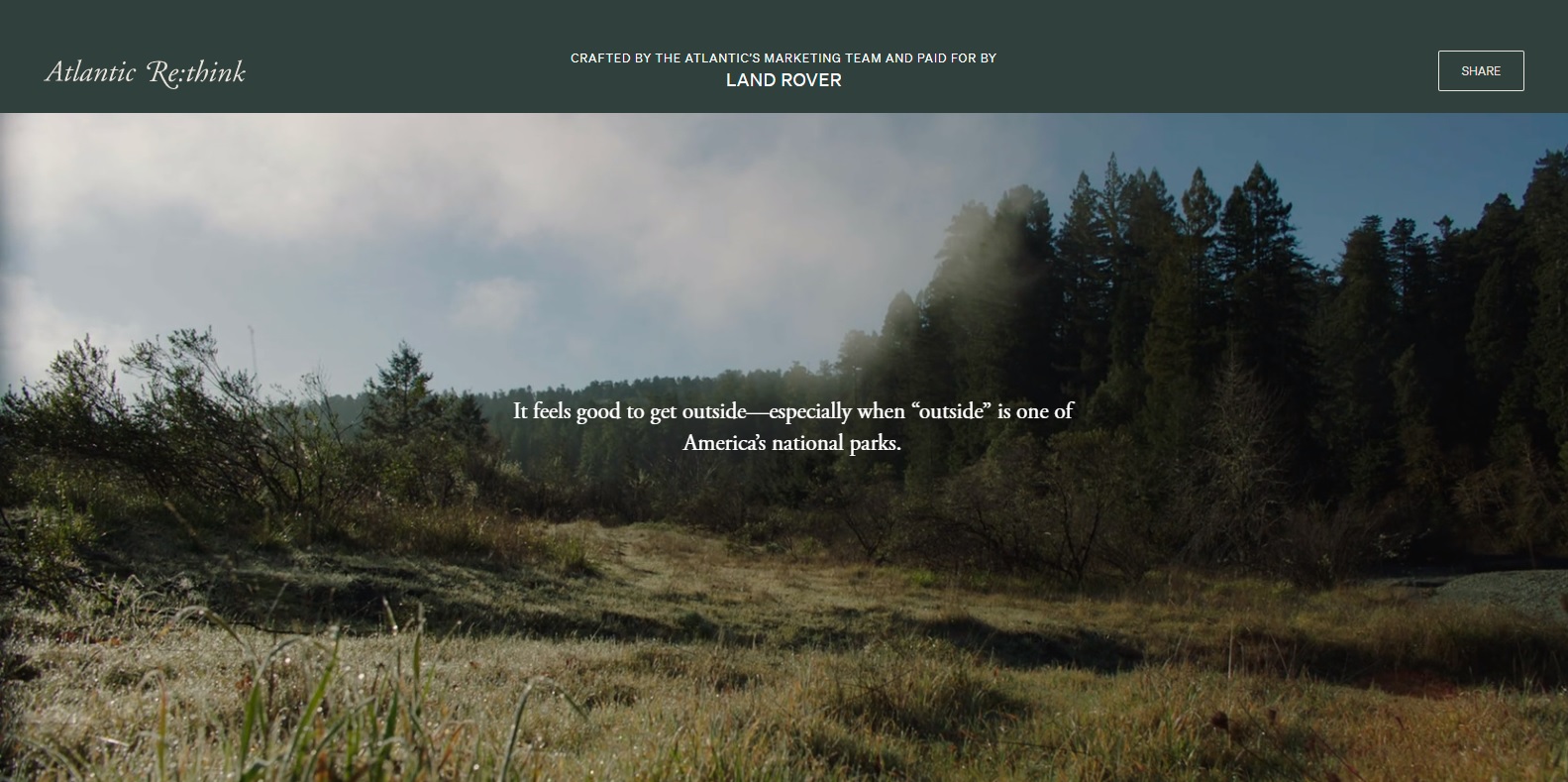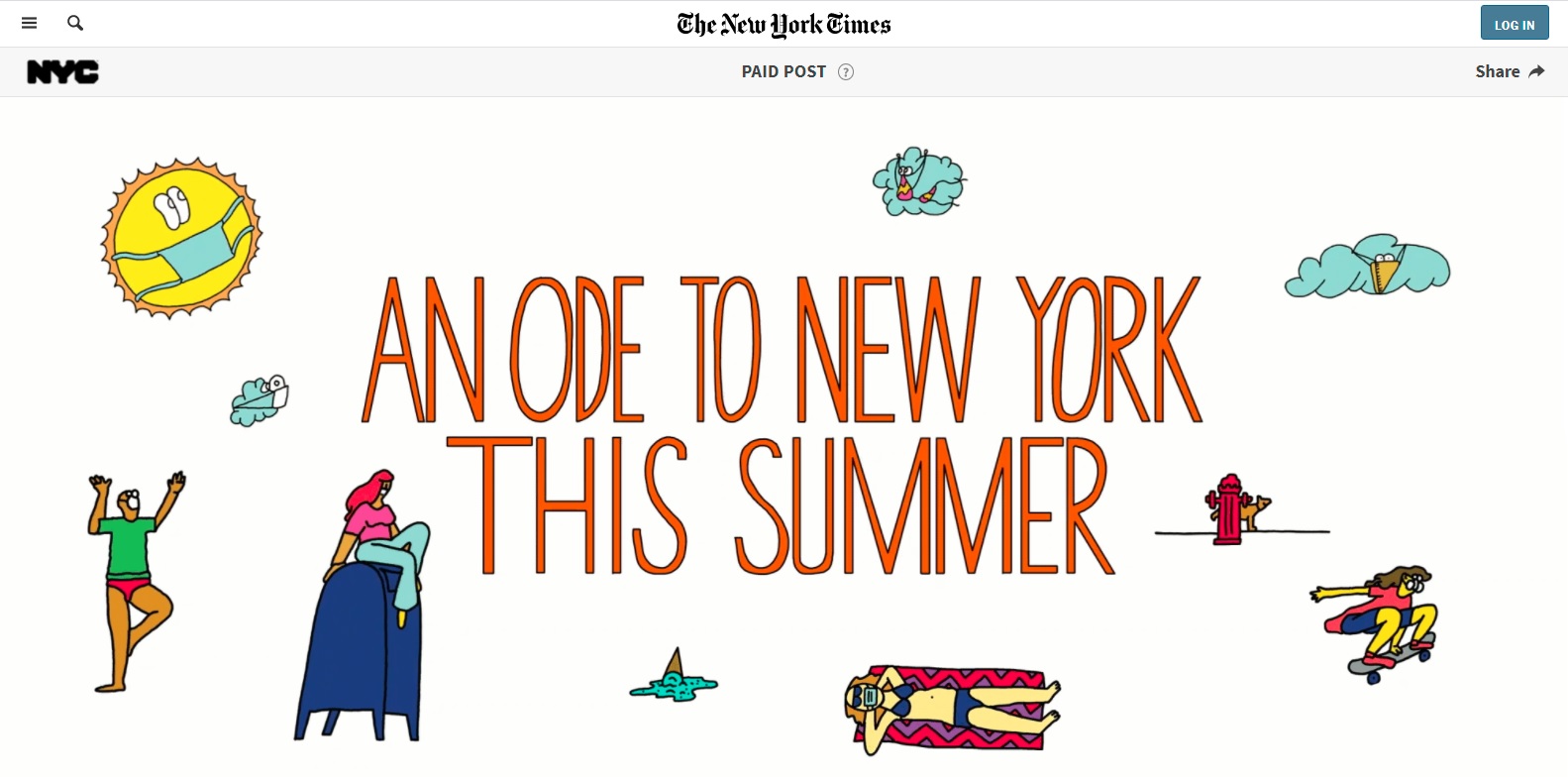Technology
Services
Resources

It was back in 2012 that native advertising first burst on to the scene as the new shiny tool available to marketers. Ever since then, adoption of the medium has grown at a steady pace to a point where it is now the dominant advertising format, accounting for 62% of all display spend in 2021 according to eMarketer. This growth is a reflection upon the changing mindset of the advertising world. As consumers today become more demanding with brands and progressively skeptical of modern advertising strategies, marketing organizations are rising to meet these challenges with increasingly intrepid, increasingly bolder content that meaningfully integrates into the passion points of their target audience and meets them where they are in their buying journey.
It’s working, too. Native advertising is clearly striking a chord with consumers. In a study carried out by ShareThrough in collaboration with IPG Media Lab, it was found that native ads registered an 18% higher lift in purchase intent and a 9% lift for brand affinity responses as compared to banner ads. It’s an ad medium that rips up the rulebook, breaking away from what established go-to-market campaigns look and feel like. Some native ads are born from large-scale bespoke productions crafted by specialized content teams using complex designs and UX principles—the type championed by the likes of The New York Times, The Wall Street Journal, The Atlantic, The Guardian, The Financial Times, and The Washington Post. Others are more subtle, less flamboyant, yet just as impactful.
So, what makes for successful native advertising? What factors distinguish powerful sponsored content from that which becomes instantly forgettable? The most effective native ads always abide by the medium’s prime differentiator: non-disruption—they blend naturally into the form and function of the editorial habitat in which they live. Over and above that, the truly great native advertising campaigns offer hyper-relevant content for their audiences in a manner that exudes authenticity, providing education and entertainment all at once. They are, in essence, inherently valuable to the reader.
In this article, we take a deep dive into five of our favorite examples from the last year. Covering a wide gamut of markets with campaign focus ranging from text and illustrations to video and social media, these native ads all have one thing in common: astonishing creativity and innovative approaches.

About the Ad
Can the circular economy transform our relationship with plastic? This is the question posed by environmental solutions leader Veolia in their extravagant native ad that aims to shine a light on the economics behind the global plastic ecosystem. Developed in partnership with The New York Times’ in-house content development agency T Brand Studio, the initiative was launched back on June 5th, 2020, to coincide with World Environment Day, and has since been widely disseminated across the web and included in The NYTs’ Climate Solutions Special Report.
Why it Works
Through this campaign, Veolia demonstrates how plastic can be transformed from a damaging source of pollution into a precious resource when we equip ourselves with the infrastructure to recycle it. Built around dynamic eye-popping graphics that bring the issues associated with the subject to life, this ad cuts through the clutter concerning environmental welfare to deliver compelling reasons why we should all get involved in the process and change our relationship with plastic. The campaign was supplemented by a series of posts on The NYTs’ social channels that creatively framed Veolia as a forward-looking trailblazer in the manufacturing of green products.

About the Ad
Luxury jewelry brand Piaget teamed up with The Financial Times to illuminate the stories of four exceptional women who are combatting antiquated attitudes in order to smash through glass ceilings and rise to the top of their respective fields. The objectives of the campaign were three-fold: to position Piaget as a leader in actively disseminating the importance of female empowerment; to raise awareness of the brand among a young female audience; and to contribute to the ongoing discourse around the evolving perceptions of femininity. The four women to feature include visual artist Chen Man, actress Constance Wu, and co-founders of RAD Carineh Martin and Arianne Phillips, each of whom share a passion for creativity and a deep empathy with the world beyond their own personal borders.
Why it Works
Anchored on a dedicated destination site on ft.com, this highly visual multimedia native ad uses a combination of in-depth written content and three medium-length videos to portray its narrative. The campaign is ultimately so compelling because the stories told by these pioneering figures are incredibly inspirational. A diverse melting pot of backgrounds, professions, and visions converge to work toward the same fundamental goal of inspiring other women and girls around the world. Dynamic graphic design and thought-provoking content—the two hallmarks of quality native advertising—merge seamlessly here to allow Piaget’s message of empowerment to reverberate with readers in a wonderfully authentic, impactful manner.

About the Ad
Over the last year, stepping out from the home and venturing into the wilderness has taken on more profound meaning than ever before. It has never felt so great to be immersed in the beauty of nature. To underscore this truth, Land Rover joined forces with Atlantic Re:think—the creative marketing studio within The Atlantic—to craft a campaign fronted by John Mayer, in which the renowned musician takes an almost spiritual journey into the Redwoods of Northern California behind the wheel of the new 2020 Land Rover Defender. Throughout his adventure, Mayer goes hiking with a local guide, practices some river fly fishing, enjoys a spot of off-roading, and pauses for the occasional moment of self-reflection. It’s a story about the power and necessity of escaping daily routines to be outdoors.
Why it Works
Shot in March 2020, the six-minute film was designed to capture the experience of getting away into nature while simultaneously framing Land Rover as the ideal vehicle and companion with which to do so. It does that perfectly. Atlantic Re:think pushes the boundaries of native advertising in this campaign by tapping into top talent, big ideas, and abstract visual concepts. The ad is so much more than the film itself, though. There are stunning accompanying photographs. There is insightful written content. And there is entertaining behind-the-scenes footage. The piece also offers some related articles on why we need the great outdoors, including an extraordinary piece lifted from the 1862 issue of The Atlantic, and then concludes by encouraging readers to get outside themselves with links to the locations of National and State Parks across the United States. The final words are “Close your computer. Turn off your phone. Get outside.” Never has that advice been more salient.
About the Ad
According to German national rail provider Deutsche Bahn, 72% of Germans fly abroad for their holidays every year. In an effort to inspire the German population to travel within the country instead, and enjoy the benefits of cheap train travel, Deutsche Bahn got together with their creative partners at Ogilvy to build a campaign illuminating the beauty of domestic destinations closer to home. To do that, the team employed an algorithm to identify locations in Germany that resembled iconic international landmarks that people were looking at online when researching summer travel plans. The brand then ran automated programmatic native ads, targeting travel enthusiasts and local influencers, juxtaposing the real-time costs of flying to select places—for example Vancouver, Canada or Santos, Brazil—against the cheap 19-euro fare to visit a lookalike spot in Germany.
Why it Works
By colliding the two worlds of creativity and programmatic, this ad was able to scale quickly and reach highly targeted audiences with unrivaled precision. The outcomes speak for themselves. Over the course of two weeks, the campaign generated close to 10,000 unique personalized assets that resulted in the sale of two million special price tickets in two-thirds of the time it traditionally takes. Deutsche Bahn increased revenue by 24% and saw an 850% lift in click-through rate year-over-year, helping them to achieve the best ROI of any summer campaign in its history. It was, unquestionably, an unqualified success. In a talk about data-driven creativity in Cannes, Sheryl Sandberg—the Chief Operating Officer at Facebook—declared that this campaign was “the future of advertising”. A ringing endorsement.

About the Ad
Back in the early spring of 2020, the term social distancing was an alien concept to most. As the weather warmed up and the coronavirus pandemic gripped the United States, New York City’s Mayor’s Office needed to educate New Yorkers on new public interventions and measures that were now vitally important to follow. The City wanted a light-hearted, playful ad that would both engage readers and subtly encourage them to change their behaviors so that a safe summer could be enjoyed by everyone inside and outside of the home. They partnered with T Brand Studio to bring it to fruition.
Why it Works
“Be Smart — Keep at least six feet apart. What’s that look like? Misty Copeland rehearsing her spins; 3 trash and recycling bins. The length of 2 baseball bats; or 6 bodega cats. The umbrella of a hot-dog vendor; an XL beach towel in all its splendor.” The list of clever rhymes goes on. With compelling copy and attention-grabbing animated illustrations based on some classic NYC staples — baseball, bodega cats, hot-dog stands, and more—this ad shows social distancing in relatable terms while highlighting to audiences what makes the city so unique. This guide was one of three to be published on nytimes.com promoting safety measures throughout pandemic, and they were also showcased in full-page print ads in The New York Times, representing a shared goal to help Americans through an uncertain and unsettling time.
The sheer diversity of these campaigns illustrates that there is no single formula for success when it comes to native advertising. With continued advances on the programmatic native front and more and more inventory emerging on publisher sites, delivering compelling and effective sponsored content is becoming increasingly tangible for brands. No longer are marketing teams confined to running native ads embedded within in-feed environments; the options are there now to branch out and create hybrid models of advertising that seamlessly connect with desired audiences in new and meaningful ways. From made-to-order long form features to podcasts and infographics and everything in between, the possibilities are boundless.
Know your audience. Respect the host media’s DNA. Be courageous. Adhere to these three principles and you can become empowered to get your content in front of the people that matter to drive improved brand engagement.
~
If you’re looking for assistance with your native ad campaigns, we have a host of free resources available. You can register to join our upcoming webinar exploring why native continues to be a top-performing medium; you can check out our comprehensive guide to native advertising that includes a selection of creative best practices; or you can simply get in touch and have a conversation with our digital media experts.
Go out and get inspired. Maybe your next native ad will be on our list in 2022.